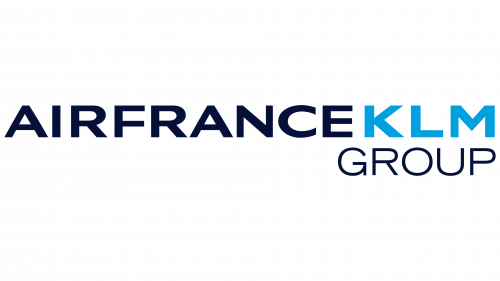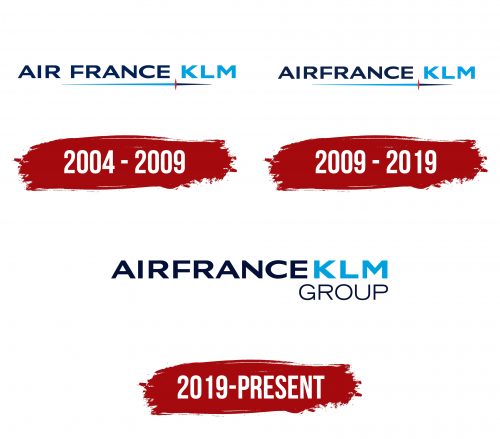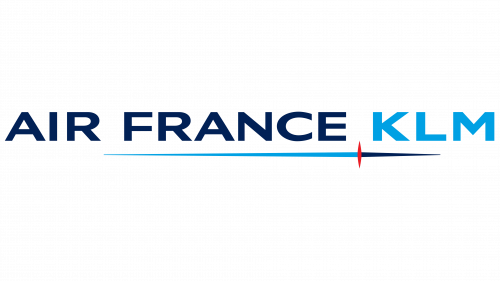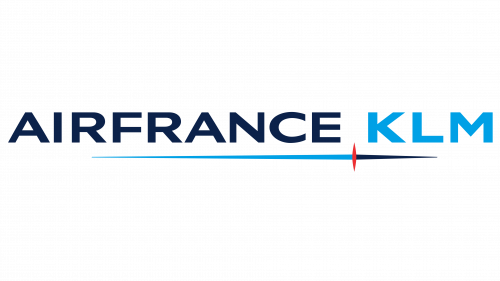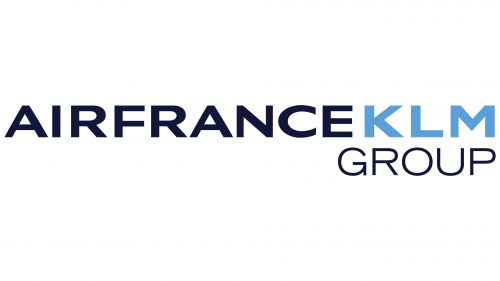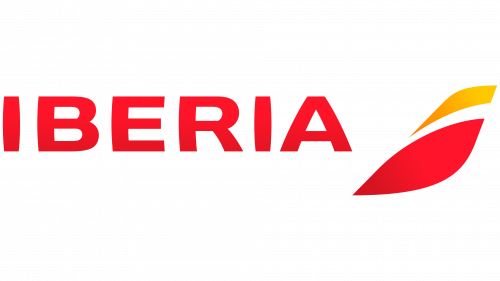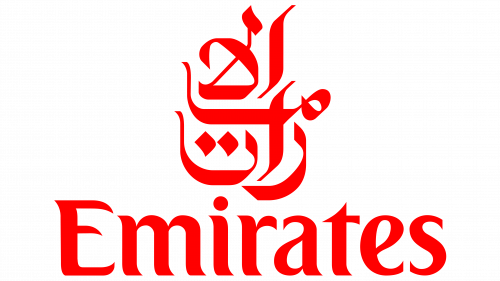The Air France-KLM logo symbolizes the union of two major airlines, each with a rich heritage and experience in the aviation industry. The emblem’s simple and minimalist design emphasizes the company’s professionalism and reliability. The varying shades evoke a sense of stability and trust while associating the brand with the sky and flight.
Air France KLM: Brand overview
Founded on October 7, 1919, Koninklijke Luchtvaart Maatschappij (KLM) is one of the oldest airlines still operating under its original name. Dutch lieutenant Albert Plesman founded KLM, and its first commercial flight was from London to Amsterdam on May 17, 1920.
In the 1920s, KLM expanded its route network to include other European countries. Its first transatlantic flight was to Indonesia in 1924, when it was still a Dutch colony.
Air France was established on October 7, 1933, by merging several French airlines. Its first international flight was on the Paris-London route.
Both airlines survived World War II despite suffering significant losses. They resumed operations after the war and began expanding their route networks.
Both carriers entered the jet age during the 1950s and 1960s. KLM introduced the Douglas DC-8 in 1960, while Air France began flying the Sud Aviation Caravelle in 1959 and the Boeing 707 in 1960.
Wide-body aircraft became part of the fleet in the 1970s. Air France introduced the Boeing 747 in 1970, followed by KLM in 1971. By 1976, both airlines were among the first to operate the Concorde supersonic jet.
The 1980s and 1990s saw increased competition and consolidation within the industry. Both airlines updated their fleets and expanded their networks. KLM allied with Northwest Airlines in 1999, and Air France became a founding member of SkyTeam in 2000.
A major turning point came in 2004 with the merger of the two companies. The new group was officially established on May 5, 2004, creating the world’s largest airline by revenue and the third-largest passenger traffic.
After the merger, Air France and KLM kept their separate identities and operational bases in Paris and Amsterdam while integrating their financial operations and planning.
The group expanded further in 2009 by acquiring a 25% stake in Alitalia, though it later sold it. The 2010s brought challenges, such as competition from low-cost carriers and Gulf airlines, prompting the launch of Transavia, a budget airline, in 2012.
In 2015, a new strategy, “Perform 2020,” was introduced to improve competitiveness. Significant changes in ownership followed in 2017 when the French and Dutch governments increased their stakes, leading to shareholder disagreements.
In 2018, the company Delta Air Lines and Virgin Atlantic expanded their transatlantic joint venture to strengthen their position in this key market.
As of 2023, the group remains one of the largest airline companies in the world, continuing to invest in fleet modernization and service improvements to maintain its leadership in global aviation.
Meaning and History
What is Air France KLM?
This union of the national airline of France and the flagship carrier of the Netherlands formed one of the largest airline groups in Europe. This partnership connects major cities worldwide through one of the most extensive air transport networks. The airline group offers services for budget travelers and executives who prefer luxury, using a diverse fleet of aircraft—from long-haul wide-body planes to regional jets. It is known for its strong route connections with Asia, America, and Africa, serving passengers through Europe.
2004 – 2009
The logo that emerged after the merger appears simple, but every element conveys the meaning of uniting two powerful airlines. This was a significant event in the aviation industry when two major players decided to join forces, and their logo perfectly reflects this merger.
The logo’s font is strict and concise, highlighting the company’s reliability and stability. There are no unnecessary details or decorative elements—everything is straightforward and to the point. The company names are combined in a single visual line, signifying the equality of the two brands and their shared commitment to progress. They aim to show that they are now working together for the benefit of their passengers.
The dark blue color in “Air France” symbolizes trust, confidence, and stability. It’s a color associated with professionalism and high service standards, which are characteristics of the French airline. On the other hand, the light blue in “KLM” evokes the sky, flights, and lightness. This color is a signature of the Dutch company, emphasizing its traditions and connection to the sky.
However, the most interesting element is the horizontal line running under the name. This line seems to connect two worlds. It starts with a light blue shade and transitions into a deeper blue, symbolizing the smooth merging of two cultures. The red element in the middle of the line represents a passion for flight, dynamism, and movement. This small touch adds energy to the strict and reserved design, hinting that the company is not standing still but constantly evolving.
2009 – 2019
The 2009 Air France-KLM logo resulted from a rebranding effort when Air France decided to update its brand identity, which consequently led to changes in the joint logo of the two airlines. The new logo reflects the modern trends of the time, as more companies sought minimalism and precision in their visual representation.
The font in the logo remains strict and free of unnecessary details, continuing to convey a sense of reliability and stability. The clean lines of the letters emphasize a business-like, modern style.
The color scheme remains classic: dark blue and light blue. The word “Air France” is written in dark blue, while light blue is used in the word “KLM,” maintaining the signature identities of both brands.
2019 – today
The modern Air France-KLM Group logo is the calling card of the union between two aviation legends. Every detail is carefully considered and reflects the merging of the cultures of France and the Netherlands. This visual mark conveys what both companies have become after their merger: scale, reliability, and confidence.
The font is strict and minimalist, without decorative elements, frills, or playful styling. The companies focus on air transportation, so everything must be of the highest standard. The emblem sends a clear message: they are as serious about their work as their design—everything is straightforward and clear.
The dark blue color in “Air France” symbolizes trust and stability. Blue is often associated with reliability and professionalism.
“KLM” is highlighted in light blue. This is the company’s classic color, always used in its emblem and aircraft design. It’s associated with the sky, flight, and freedom. The light blue color adds lightness and shows that the brand maintains its identity despite the strict style. The light blue color brings freshness to the logo, reminding us of dynamism and growth.
The lower part of the visual mark—”GROUP”—is in black font, emphasizing that this is a corporation, an alliance of two major companies under one roof. The word “GROUP” signifies that this is now a powerful and influential structure in the global market.
The logo contains nothing extra because it’s designed to speak to the essentials: reliability, professionalism, and a focus on the future—this is the union of two giants in aviation.
